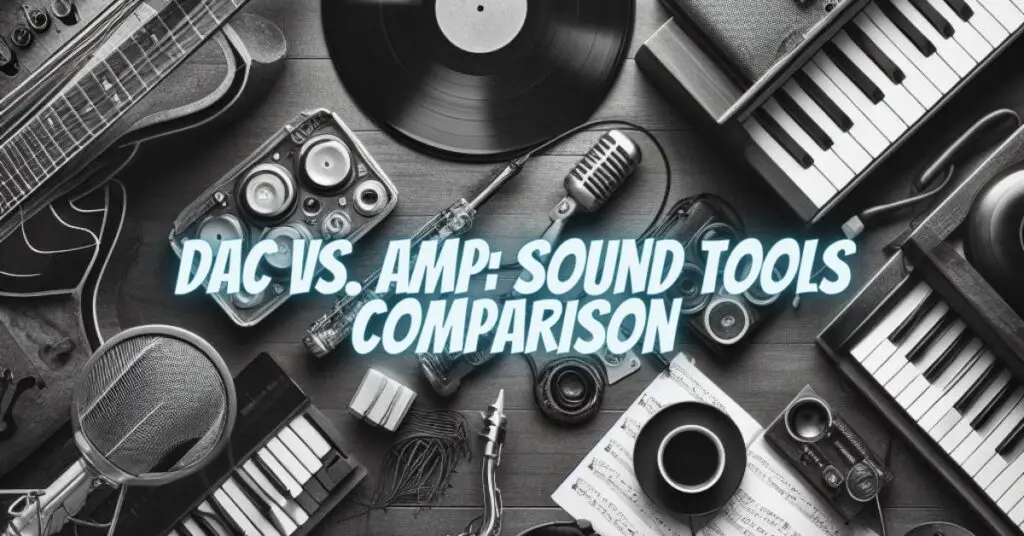In the realm of audio reproduction, the choice between a DAC (Digital-to-Analog Converter) and an amplifier (amp) is a common point of confusion among audiophiles and casual listeners alike. Both DACs and amplifiers are essential components of an audio system, each serving distinct roles in the quest for high-quality sound. In this article, we’ll explore the differences between DACs and amplifiers, their individual functions, and how they work together to create an immersive listening experience.
DAC: The Bridge from Digital to Analog
A Digital-to-Analog Converter (DAC) is a critical component in modern audio systems, especially when dealing with digital sources like computers, CD players, or streaming devices. Its primary function is to convert digital audio signals, represented as binary code, into analog signals that can be heard through speakers or headphones.
Here’s how a DAC works:
- Digital Input: A DAC receives digital audio data, which consists of numerical values representing the audio waveform. This data is typically generated by a digital source.
- Conversion: The DAC processes the digital data and translates it into corresponding analog voltage levels. This transformation bridges the gap between the discrete world of digital audio and the continuous waveforms of analog audio.
- Output: The analog audio signal generated by the DAC is then sent to an amplifier, which boosts the signal to a level suitable for driving speakers or headphones.
In essence, the DAC is the intermediary that enables digital audio to be heard in an analog form. Its primary role is ensuring accurate conversion, but it doesn’t directly affect the volume or power of the audio signal.
Amplifier: Boosting the Signal
An amplifier (amp), on the other hand, is responsible for increasing the voltage and current of the analog audio signal. This boost is necessary to power speakers and headphones, allowing them to produce sound. Amplifiers come in various types, such as solid-state, tube, and class-D, each with its own characteristics and capabilities.
Here’s how an amplifier works:
- Analog Input: An amplifier receives the analog audio signal from the DAC or any other audio source.
- Amplification: The amplifier increases the voltage and current of the analog signal, effectively boosting its power. This amplified signal is then sent to the speakers or headphones.
- Output: The speakers or headphones use this amplified signal to produce sound, moving diaphragms and creating air pressure variations that we perceive as sound.
While the DAC ensures that digital audio is translated into analog form with precision, the amplifier is responsible for providing the necessary power to drive the transducers (speakers or headphones).
DAC vs. Amp: Complementary Roles
DACs and amplifiers are not competitors; they are complementary components that work together to deliver an exceptional audio experience. When considering the differences between DAC and amp, it’s crucial to understand their distinct roles:
- DAC: Focuses on converting digital audio to analog, ensuring accuracy and clarity. It doesn’t directly control volume or amplify the signal.
- Amplifier: Concentrates on increasing the voltage and current of the analog audio signal, providing the power required to move speaker diaphragms and create sound. Amplifiers can control volume but do not handle digital-to-analog conversion.
Integration and All-in-One Solutions
In some cases, you may come across integrated solutions, such as AV receivers, integrated amplifiers, or digital source components that combine DACs and amplifiers in a single unit. These integrated solutions simplify the audio chain, offering convenience and reducing the need for separate components. However, even in such setups, the fundamental roles of the DAC and amplifier remain the same.
Choosing the Right Components
When building or upgrading an audio system, it’s essential to select the right DAC and amplifier to suit your needs and listening preferences. Consider the following factors:
- DAC Quality: Look for a DAC with good signal-to-noise ratio and low distortion for accurate conversion.
- Amplifier Power: Ensure that the amplifier provides sufficient power to drive your speakers or headphones effectively.
- Speaker/Headphone Compatibility: Make sure your speakers or headphones match the amplifier’s impedance and power requirements.
- Listening Preferences: Different amplifiers and DACs can have varying tonal characteristics. Choose components that match your preferred sound profile.
In the world of audio, the choice between a DAC and an amplifier should not be framed as a competition but rather as a consideration of their distinct and complementary roles in the audio chain. A DAC focuses on accurate digital-to-analog conversion, while an amplifier boosts the analog signal to power speakers and headphones. Understanding these roles and choosing the right components for your specific needs is vital for achieving an exceptional listening experience. Whether you’re an audiophile seeking high-fidelity sound or a casual listener looking for better audio quality, the synergy between a DAC and an amplifier is key to unlocking the full potential of your audio system.


